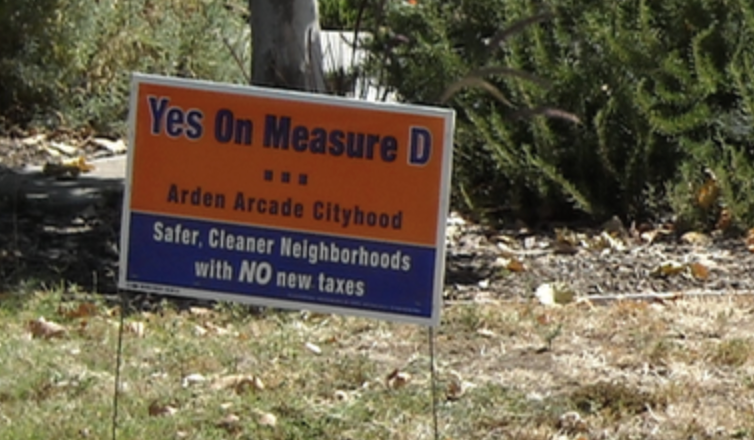Level the Playing Field: Annexation vs Incorporation

Annexation is a process whereby unincorporated territory is brought into a city. The state's process for annexation is laid out in the Cortese-Knox-Hertzberg Act, Section 56000 et seq of the CA Government Code, known as the LAFCO (for Local Agency Formation Commission) Law. The LAFCO Law gives the LAFCO power to say yea or nay to an incorporation proposal. Under that law, annexations are easy, whereas incorporations are hard. That's an unbalanced approach that needs to be changed.
There is a LAFCO in every county, typically consisting of appointed commissioners from the county and cities (if any) within the county, plus a "public member" who is usually a well-connected resident of a city or a privileged neighborhood in the unincorporated area. Some LAFCOs also have commissioners elected by special districts within the county.
The LAFCO process for annexations is written as though a city might need to bring an adjacent farm or two into its city boundary to fulfill some kind of civic need - such as a plot of land that could be developed as a residential subdivision. Recent court cases have also put some pressure on LAFCOs to look kindly on annexation of "islands" of unincorporated territory that are surrounded by incorporated municipalities.
The LAFCO annexation process flows from a city's General Plan, which can claim a "Sphere of Influence" for future city expansion. The process thus does not mandate a vote of the public in the impacted area. Nor does it stipulate revenue neutrality for the county that would forgo revenue from the annexed area. Instead, it calls for a "property tax exchange" between the annexing city and the adjacent county. That's something counties tend to support as a way of organizing who will be responsible for the annexed area's (remember - used to be a farm) municipal services. Incorporations require both revenue neutrality and a vote. In an incorporation process, LAFCO cannot approve an incorporation unless unless it finds that the amount of revenues the new city takes from the county after incorporation would be substantially equal to the amount of savings the county would attain from no longer providing services transferred to the new city.
A proposal to annex territory into a city can be brought to a public vote if protested by 25% or more of the registered voters or 25% of the land owners whose property would be subject to the annexation proposal. There is a 30-day window for such protests. That might seem reasonable if an annexation proposal is aimed at a few parcels and a small number of landowners. But it is absurdly inappropriate in the case of an annexation of many parcels and numerous residents. First, 30 days is an unrealistic time frame for people to get wind of an annexation proposal. Next, it is no small feat to get property owners to sign on to a petition: they have to be there when you knock on their door, they have to fully understand the proposal and how it might impact them, and they have to be willling to sign. And, finally, it is tough to inform and organize a large group of people and galvanize them into taking action - it is an expensive, time-consuming effort, for which the victims of an annexation proposal are largely unprepared. In practice, then, the stipulations of the LAFCO Law that sound like they would give voice to the victims of an annexation are utterly unrealistic. Those provisions are so unrealistic they are tantamount to not allowing for protest elections. And, typically, the city proposing the annexation can easily fund the signature-gathering effort, whether by using taxes from its own treasury or fees paid by willing developers. That's unfair to unincorporated areas that are coveted for annexation.
State policy assumes that annexation is a panacea for unincorporated area residents and businesses who want their community to be better. Unincorporated communities have learned by experience that cities commonly practice predatory annexations - grabbing revenue-producing land - and have little or no interest in taking on the additional expense of giving disadvantaged communities a hand up and out of their distress. It might seem that annexation is always a good thing because the people being annexed will get better deal by being included in a city contiguous to their community. Our experience has shown that isn't necessarily the case. The dominant power structures of existing cities - particularly large cities - are not necessarily inclined to share power with residents of newly- annexed areas. Life for residents of disadvantaged unincorporated communities, is not guaranteed to improve if drafted into a larger city area.
In 2022 the Legislature sent a bill (SB1449) to the Governor to provide incentives for cities to annex disadvantaged communities. The Governor vetoed the bill, citing an unfounded assumption that the grant program proposed by the bill would cost the state "tens of millions of dollars annually". Our coalition believes unincorporated communities would be better served if the Legislature understood that incorporation proposals, not annexation proposals, are the ones that would benefit the state. As it is, the state's municipal incorporation laws restrict the formation of new cities by making incorporation proponents carry the burden of the costs of the process. And that works against the state's interest in having functional cities that can help implement California's urban policy set. So it would help the state if incorporation proposals could access grant funds.
Annexation, particularly a predatory annexation is a serious threat to an unincorporated area that seeks to retain its own identity and sense of community. It should be the right of an unincorporated community to decide the fate of its governance, whether through incorporation or annexation. At a minimum, a vote by the unincorporated area proposed for annexation, funded by the annexation proponents, should be required. Revise the LAFCO process concerning annexations.

